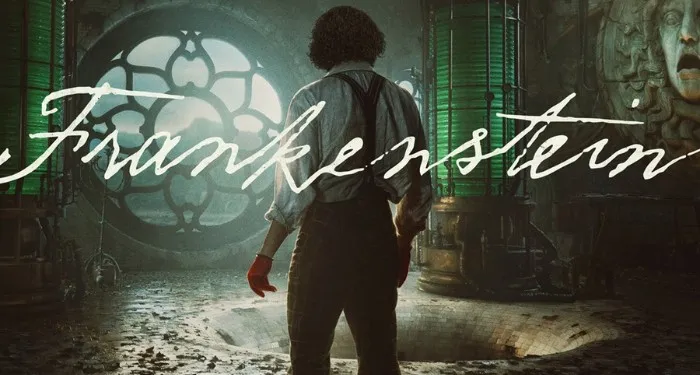According to HUD’s Annual Homelessness Assessment Report, approximately 770,000 people in the United States were homeless in 2024, an increase of 18 percent from 2023.1 The number of families that were homeless increased by 39 percent, and the largest increase by age group, 33 percent, was among children under eighteen. “Among people experiencing homelessness, 64% were staying in sheltered locations,” the National Low Income Housing Coalition noted, “while 36% were experiencing unsheltered homelessness in places not meant for human habitation.”
But “recent research,” Brian Goldstone writes in There Is No Place for Us: Working and Homeless in America, “reveals that the actual number of those experiencing homelessness in the United States…is at least six times larger than the official figure.” In his beautifully crafted book, he tells the revelatory and often heartbreaking stories of five families in Atlanta who are the “new face of homelessness in the United States: people whose paychecks are not enough to keep a roof over their heads.”
All five families are Black Americans—as are 93 percent of homeless families in Atlanta—have two or more children, and, except for one married couple, are supported and cared for by a single mother who holds one full-time job and often works at one or more other jobs. These women and their families, part of America’s low-wage labor force, “find themselves trapped in a sort of shadow realm, languishing in their cars, the overcrowded apartments of friends and relatives, and hyperexploitative extended-stay hotels and rooming houses.”
The problem of increasing homelessness is particularly acute in Atlanta—the third-fastest-growing metropolitan area in the country—as well as in New York, Austin, Phoenix, Denver, Nashville, and Washington, D.C. “Currently, 11.4 million low-income households are classified as ‘severely cost burdened,’ spending, on average, an astounding 78 percent of their earnings on rent alone,” Goldstone writes. Between 2010 and 2023 median rents in Atlanta rose by 76 percent, the city lost 60,000 apartments that rented for $1,250 or less, and “94 percent of the tens of thousands of apartments added to the city’s rental market have been luxury units.”
Goldstone calls the displaced people he writes about “the working homeless,” who regularly fall prey not only to rapacious developers and landlords but to sheer bad luck. Early in the book we meet Celeste Walker, a single mother of three children who, while at work as a parts inspector in a warehouse, receives a call from a neighbor: the two-bedroom house she’s been renting for the past year is on fire. By the time she arrives there, the firefighters are finishing up, and everything in the house has been destroyed. For the next eight months, other than a brief period when her two sons stay with their grandmother in Tampa, she and her children live in her car or in apartments of friends, where they sleep on the floor. After she locates an affordable apartment and pays a fee to a leasing agent, the agent calls and says her application has been rejected because of a recent eviction. Celeste is puzzled, says she was never evicted, but returns to her burned-out house and finds in the mailbox an eviction notice with a comment from a sheriff stating that it was “served to fire damaged property.” Because Celeste did not file a response within seven days—in Georgia tenants do not have to be notified in person of an eviction—a default judgment has been handed down in favor of the landlord.
When Celeste and her children are not living and sleeping in their car, they stay at Efficiency Lodge, the cheapest extended-stay hotel she can find—$257 a week, payable each Saturday by noon. Extended-stay hotels, which offer “none of the security or clear tenancy rights of formal housing,” Goldstone writes,
were not simply filling a gap in the city’s housing landscape. They were actively exploiting that gap. As more and more people found themselves pushed out of the rental market, hotels like Efficiency—where a mold-infested room could devour the entirety of a family’s income, making it impossible to save enough money for a security deposit and first month’s rent at a real apartment—had grown ubiquitous.
Suffering pains in her abdomen, pelvis, and lower back and, like many patients on Medicaid, without a primary care physician, Celeste spends the next four months cycling through emergency rooms at three different hospitals before she gets to see a specialist. He orders a battery of tests and scans that reveal that she has both ovarian and breast cancer. While undergoing chemotherapy, Celeste, who had always dreamed of owning her own restaurant, works when she can as a “picker/packer” at a ProLogistix warehouse and supplements that income by turning her family’s one room at Efficiency into an eatery where on weekends she cooks and serves twenty meals a day. She also takes a job cleaning rooms evenings and weekends at Efficiency in advance of a scheduled inspection by the county board of health, which has recently found more than three hundred code violations at the hotel.
Six weeks after she begins her cancer treatment, Celeste finds that her “fear of getting trapped indefinitely at Efficiency now outweighed the embarrassment of pleading for help” and that “pride and dignity were luxuries she could no longer afford,” so she goes to a regional service center run by HUD. After an interview, to which she has brought police evidence of the arson that caused her to lose her home and medical records testifying to her cancer diagnosis and treatment, a caseworker informs her that she and her children do not fit HUD’s criteria. “In order to get housing aid,” the caseworker says, “you have to be considered literally homeless, which means you’re in a shelter or on the street. Unfortunately, other circumstances don’t qualify.”
“Early in my conversations with the families, I was asked what the reporting process would entail,” Goldstone writes. “Basically,” he told the families, “spending as much time with you as possible.” This approach
owed much to my training as an anthropologist, which had taught me the significance of open-ended, immersive engagement with a social world—a methodology aimed at capturing the depth and texture, the ebbs and flows, of people’s lives.
Goldstone’s portraits of Celeste and her family and of the four other women and their families are vivid and palpable, not only because he has been trained as an anthropologist but because he has the clear eye and deft touch of a master storyteller. There Is No Place for Us reveals an America few of us know. It “is a book,” he writes in the introduction, “about what we’re not seeing.”
I can vouch. For the past twenty-eight years I’ve served on the boards of two organizations that work with people who are experiencing homelessness, Pathways to Housing and the Housing First Institute; I’ve also worked for more than two decades with the National Alliance on Mental Illness, where people I came to know were homeless or had been homeless for extended periods of time. Yet during all these years I never met or worked with a single person who, like those in There Is No Place for Us, was homeless while working full-time. “To those of us who work to end homelessness here and around the world,” says Sam Tsemberis, the founder of Pathways to Housing and the creator of the “housing first” approach to homelessness, “these people are known as ‘the hidden homeless.’”
“It used to be,” Goldstone writes, “that owning a home was held up as the ultimate goal, a reward for diligent effort and perseverance. Now simply having a home has become elusive for many.” In the book’s first story, one paradigmatic of all of them, homelessness is a casualty of prosperity. A landlord sells the property where Cokethia Goodman and her children are living so she can cash in on an Atlanta neighborhood that is gentrifying. Unable to find another affordable apartment nearby, they are forced to relocate, at fifty dollars more a month, to the only apartment they can afford, “a dilapidated rental…on the city’s outer periphery.” When Cokethia’s twelve-year-old son receives a painful shock while washing dishes, officials are called in, find exposed wiring in the basement, and condemn the property. The family moves “into a squalid extended-stay hotel, until the weekly rent [proves] too expensive [and there’s] nowhere left to go.”
Cokethia, who works full-time as a home health aide, says that she was taught to believe “that homelessness and a job were mutually exclusive: that if she worked hard enough and stayed on top of her responsibilities, if she clocked enough hours, she could avoid such a fate.” She and her family, now homeless for three months, are on a waiting list for beds in a municipal shelter. “I grew up in this city,” she says. “I graduated from high school in this city. Through my job, I’ve been taking care of men and women in this city. And now my kids and I are homeless? How does that even happen?”
It happens because, Goldstone explains,
in America today, there are just thirty-four affordable and available rental homes for every one hundred extremely low-income households who need them. This amounts to a shortage of 7.3 million low-rent apartments—a colossal deficit, and the single greatest reason why so many people are continuing to become homeless.
And “with an estimated 75 percent of land in the nation’s major cities zoned exclusively for single-family homes, it’s no surprise that the supply of housing has failed to keep pace with demand.”
In Rachel and Her Children (1988), a book about a New York City shelter for families, Jonathan Kozol observes that most homeless people can be found in cities where low-rent apartments and single-room occupancy hotels have disappeared. He explains this in a single italicized sentence: “The cause of homelessness is lack of housing.” But Kozol is writing about homeless people we see—people living on the streets, in cardboard boxes, in the subways, and moving in and out of shelters. What about Celeste and the other people Goldstone writes about—the people who are working and homeless, the people we don’t see?
Goldstone provides the historical background that shows how “large-scale privatization, massive tax cuts for the wealthy, and major reductions in social spending,” ushered in during the Reagan era along with the accompanying “discourses on poverty,”2 did
much to denigrate the urban poor, so it was a relatively small step to present homelessness as a life-style choice, or the result of laziness, or the product of any number of other personal vices. But the main strategy was to link homelessness with mental illness and addiction. Federal funding for research on homelessness was limited exclusively to the National Institute of Mental Health, the National Institute on Alcohol Abuse and Alcoholism, and the National Institute on Drug Abuse…. These conditions, however, had no more caused them to become homeless than a fever causes the flu. Yet a medicalized homelessness was deemed less threatening to government policies than a politicized one. Bolstered by a deluge of sensationalist media accounts, individual pathology became the dominant frame for understanding homelessness, diverting attention from structural factors like poverty or racism. Meanwhile, the fastest-growing segment of the nation’s homeless population were children under the age of six.
When we first meet Britt Wilkinson, the single mother of a four-year-old daughter and a two-year-old son, she is working full-time at a restaurant at Hartsfield–Jackson International Airport. She has a “grinding hour-plus commute” to and from her great-grandmother’s apartment, where “for five months [she] and her kids had been living out of several oversized tote bags in a corner of the apartment’s compact living room, next to the pullout sofa bed they shared.”
For Britt, securing a home for herself and her children depends on securing a Section 8 voucher from the Atlanta Housing Authority (AHA). With one she will spend no more than 30 percent of her income on rent, and federal funds will cover the rest. The good news is that she is one of 10,000 (out of 113,000 who applied) who have won a spot on the voucher waiting list.
After a two-year wait, she receives a letter from the AHA: she is a winner. And when she moves into a spacious two-bedroom apartment, she is “giddy with relief” and realizes, too, that if not for the voucher, she
would have joined the ranks of the severely cost burdened, [for] most apartments in the city, even ones located in rough neighborhoods, would have cost her 80 or 90 percent of her monthly earnings.
When her twenty-three-year-old cousin Steve, who has recently gotten out of prison, asks if he can stay with her for a while—the two of them had grown up together and are fond of each other—she doesn’t hesitate to say yes. But when, near the end of her first year in the apartment, and a month after Steve has moved out, she goes to the rental office and asks about renewing her lease, the manager tells her they are unable to offer her a renewal because people with “criminal backgrounds” are not allowed to reside on the property. Despite Britt’s appeals, an AHA caseworker informs her that she has to vacate the apartment and that if she does not secure another lease within sixty days, she will lose her voucher.
Britt moves out of the apartment on her twenty-fourth birthday, is turned down frequently in her search for a new one, and discovers that “whole areas of Atlanta were off limits to people with vouchers.” Of 1,674 new housing vouchers the AHA has issued, 1,055 expire before they can be used.
She finds a 542-square-foot apartment, but it is part of a large rental complex that is soon torn down to make way for new luxury apartments. She then moves in with a friend, Janeka, and finds work as a security guard to supplement her income at Chick-fil-A, where she has taken a job closer than one at the airport. On her return from a short visit to her brother in Florida, she discovers that Janeka has left and that a maintenance crew has disposed of everything she had left behind in the apartment, including a shoebox containing her and her children’s Social Security cards, birth certificates, and immunization records.
For the next five months, she moves in and out of cheap hotels and the living rooms of friends, acquaintances, relatives, and friends of relatives. On a day off from Chick-fil-A she cleans rooms at an Airbnb, and on the way home she stops at one of the extended-stay hotels she had once lived in, now a construction site for a mix of condos and farmhouse-style townhomes “starting from the low $400s.”
“I was just like, ‘Wow, this will be really nice when it’s done,’” she says later. “But me and my kids? There’s no place for us here.”
Like Britt, the other four women at the heart of There Is No Place for Us are all strong-willed, hardworking, and, despite the often cruel vagaries of their lives, inordinately optimistic; still, the book never devolves into a series of inspiring “I once was lost but now am found” narratives. It is, rather, a grim journey into an unenviable reality.
Michelle Simmons is in her early forties and a mother of three children who works full-time at whatever jobs she can find while studying to become a social worker. When we meet her, she is struggling to come up with the monthly rent for her family’s room at the hotel where she works the night shift at the front desk. At Christmas she bundles her youngest child into a stroller and stands for hours outside a local Big Lots and CVS holding a paper sign that reads HOMELESS PLEASE HELP, an experience she later describes as “the most degrading of her life.” When she misses a monthly payment, she convinces a hotel worker to lend her the key to a storage room she knows is never used, and she and her children sleep on its filthy floor and try to keep warm with a few blankets and towels. Her feelings of shame alternate with moments of despair as she farms her children out to friends and relatives and begins drinking heavily, selling her plasma, and spending her nights sleeping at bus stops and on the floors of MARTA stations. She becomes involved with an old boyfriend, Nick, who, while threatening to kill her, starts beating her. She fights back, cuts him with a shard of glass, is arrested, and spends six nights in jail. (Less than a year later Nick pleads guilty to the murder of a twenty-four-year-old woman.)
Kara Thompson, a mother of four who has dreams of owning her own cleaning company—Kara’s In and Out Cleaning Service—works on the psychiatric ward at Grady Memorial Hospital, one of the largest public hospitals in the country. Her position has been outsourced to a private company, and she does not receive health benefits; when she runs out of money and she and her children are refused entry to shelters, they begin living in her car. When the attendant at a QuikTrip gas station casually asks her how she’s doing, she says she’s fine:
She started to walk away, but then, sensing a sincerity about the man, she returned to the register. She told him the truth. She described what the last several weeks had been like, and how frightening it had been to pass the night in a parking lot, wondering if someone might try to hurt them or if the police would show up….
The attendant told Kara that she was welcome to park her car in front of the gas station. He would be there all night, he said, and he could keep an eye on them.
Although the kindness of strangers, and of friends and family members, sometimes relieves the harsh conditions that inform the lives of these women, it is their remarkable resilience and spirit (“When one door closed,” Kara believes, “God always opened another”) that permeate the book. Goldstone does more than reveal just how awful things can be and what might be done to ameliorate them, though he does that too.
In an epilogue Goldstone notes that there are, on average, seven evictions filed every minute in the United States—a total of 3.6 million in a typical year—and he suggests that ensuring that poor tenants have access to free legal representation would help reduce this number. So would direct cash assistance, rent control, laws mandating basic habitability standards, and “just cause” eviction laws, which would shield tenants from arbitrary or retaliatory evictions. To prevent families from becoming homeless, he proposes banning extortionate application fees, capping security deposits, outlawing biased tenant screening practices, prohibiting discrimination against voucher holders, and expanding HUD’s definition of who is homeless. The biggest challenge, however, is housing supply, and Goldstone is not optimistic about this, “because the market, on its own, will never be incentivized to build and maintain truly affordable housing.”
The great virtue of There Is No Place for Us is its refusal to look away from the disheartening reality it depicts, or from the depth and pervasiveness of the problem and the pain it causes people. If we could see “the hidden homeless”—if the millions of them, perhaps, each wore a scarlet “H”—would that make a difference and help spur the outrage and political will that might begin to address the conditions in which they live?

















 English (US) ·
English (US) ·